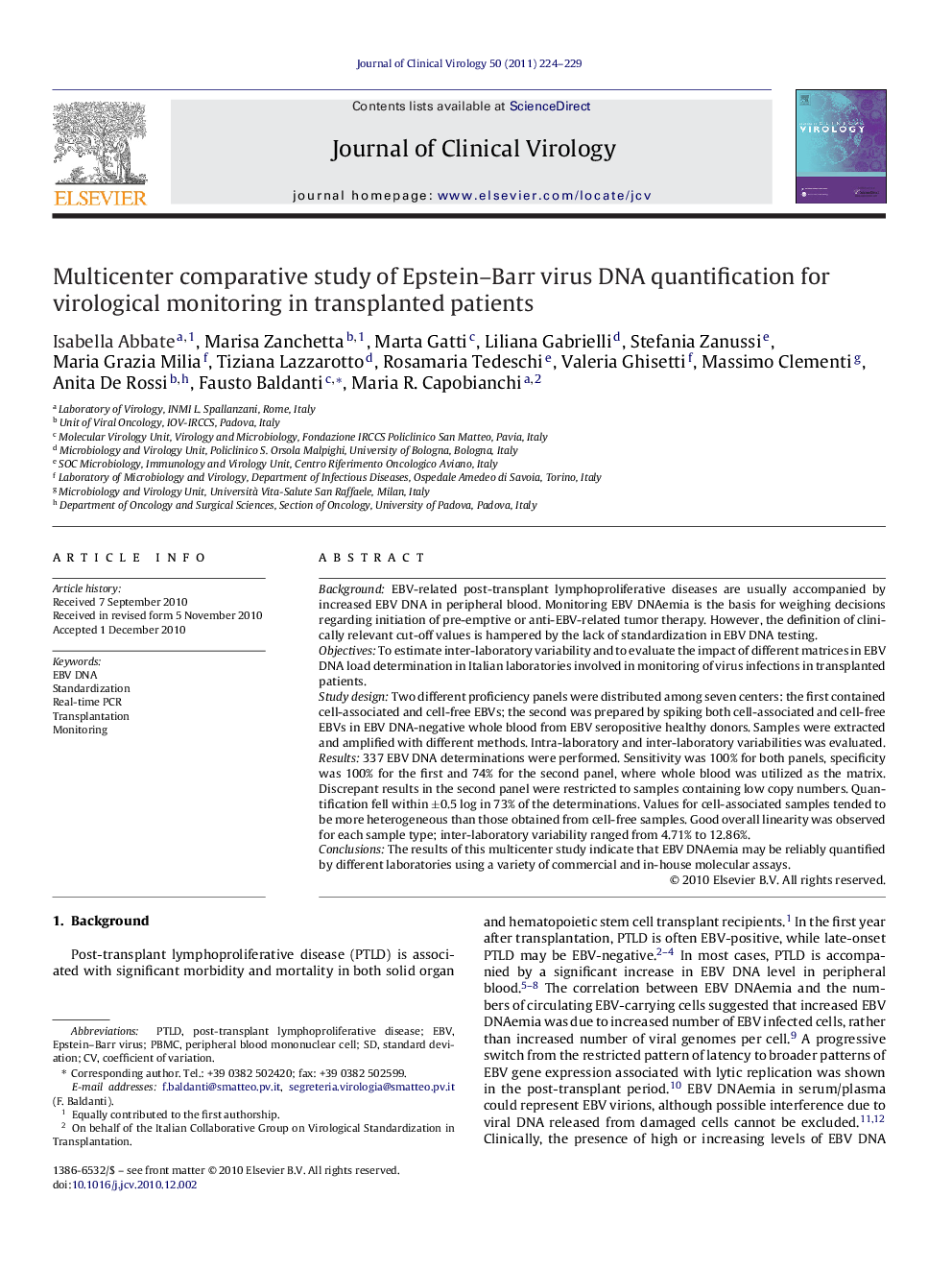| Article ID | Journal | Published Year | Pages | File Type |
|---|---|---|---|---|
| 3369238 | Journal of Clinical Virology | 2011 | 6 Pages |
BackgroundEBV-related post-transplant lymphoproliferative diseases are usually accompanied by increased EBV DNA in peripheral blood. Monitoring EBV DNAemia is the basis for weighing decisions regarding initiation of pre-emptive or anti-EBV-related tumor therapy. However, the definition of clinically relevant cut-off values is hampered by the lack of standardization in EBV DNA testing.ObjectivesTo estimate inter-laboratory variability and to evaluate the impact of different matrices in EBV DNA load determination in Italian laboratories involved in monitoring of virus infections in transplanted patients.Study designTwo different proficiency panels were distributed among seven centers: the first contained cell-associated and cell-free EBVs; the second was prepared by spiking both cell-associated and cell-free EBVs in EBV DNA-negative whole blood from EBV seropositive healthy donors. Samples were extracted and amplified with different methods. Intra-laboratory and inter-laboratory variabilities was evaluated.Results337 EBV DNA determinations were performed. Sensitivity was 100% for both panels, specificity was 100% for the first and 74% for the second panel, where whole blood was utilized as the matrix. Discrepant results in the second panel were restricted to samples containing low copy numbers. Quantification fell within ±0.5 log in 73% of the determinations. Values for cell-associated samples tended to be more heterogeneous than those obtained from cell-free samples. Good overall linearity was observed for each sample type; inter-laboratory variability ranged from 4.71% to 12.86%.ConclusionsThe results of this multicenter study indicate that EBV DNAemia may be reliably quantified by different laboratories using a variety of commercial and in-house molecular assays.
